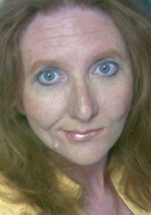
IMPORTANT FYI: It should be noted that in 1985, when the following letter was written, Dr. Craton was still trying to cause the chiropractic profession to raise it's standards. Since the chiropractors absolutely refused to follow his research by 1) refusing to teach his findings in the chiropractic colleges, and 2) refusing to embrace his methods by their boards, which are the two things that are required in order for the chiropractors to make a legitimate claim to the work, he officially turned his back on his profession in 1996 after having won the Texas Chiropractic College's Centennial Award in 1995. Basically, he was sick of their stunted paradigm and after realizing that he was not going to be allowed to affect the chiropractic standard he outright opposed them the last five years of his life and stood with me in spirit when I approached them back in 2001 in order to cause his research to be officially recognized as a separate field from chiropractic. If chiropractic will ever have the official scientific, moral, and yes even legal, right to claim Dr. Craton's research, then the chiropractic field must approach me personally in order for me to 1) educate them properly, and 2) authenticate their knowledge of his life's work. Any such request will be posted here at such time that such a request would exist. Until then, chiropractic is a fraud, and it's methodologies have been stolen from the osteopaths since D. D. Palmer, the founder of chiropractic, took everything he could from A. T. Still, the founder of osteopathy. The only reason why chiropractic has been able to establish itself apart from osteopathy is that Still referred to the 'abnormal' condition of the spine as lesions and Palmer referred to the same condition as vertebral subluxations. Today and historically, chiropractic's and osteopathy's primary focus is on the spine itself. Our primary focus is on the joints directly around the spine, and, we recognize the so-called 'abnormal' curvature of the spine to be a normal compensation for other mentioned causes.
|
EARL F. CRATON, D.C.,
Ph.C. March 4th, 1985 TODAY'S CHIROPRACTIC, Your November/December issue printed my article on page 46. In view of the following, I feel I need to correct a false concept. My grandson, Joel E. Miller, age 27, plans on entering Chiropractic College this fall. On his own, he interested James Carnes, Ph.D., professor of gross anatomy at the Texas College of Osteopathic Medicine to autopsy a cadaver for the facts relative to the biomechanics of the occipital/atlantal articulation. I was invited to participate. This took an hour and thirty-five minutes last Wednesday P.M. Careful dissection revealed no evidence of a condyle/paraglenoid ligament. The condyles and glenoid grooves of the atlas revealed matching articular facets, separated by a narrow non-articulating space but commonly served by a single synovial membrane encapsulated by the capsular ligament of each articulation. Our anatomy illustrations do not reveal this true detail. It was evident flexion and extension was the normal movement of the occipital condyles on the atlas glenoid grooves as a kinetic function. Muscles rocked the cranium on the atlas glenoid grooves, but movements of synkinesis between the condyles and atlas in a range of 2 to 3 millimeters existed in all directions of the complete circle. It was also evident atlas/axis relationship remained normal but the condyles could and had side slipped to the right on the glenoid grooves and also had rotated on the atlas in a clock-wise direction. Erosion anteriorly on the right condyle and glenoid groove facets had taken place and the whole articulation was larger in area than the left and less in vertical dimensions. Degeneration of the hyaline cartilage plate was more evident on the anterior facets. Hypo flexion of the head on the atlas resulted but more so on the right articulation. It is my opinion this occipital/atlas subluxation caused some nerve signal interference in the cranial/vertebral junction and was a contributing factor in the death of this individual. I feel honored to view this dissection and discuss it with professor Carnes. My false concepts of an anchoring para glenoid/condyle ligament is hereby acknowleged as well as the type and number of synovial articulations in this cranial/vertebral junction. My methods of correction are re-enforced. Sincerely yours, Earl F. Craton D.C., Ph.C. |
See also:
Complete list of published articles
This page was first posted on January 14, 2003 and last revised on January 9, 2022.
